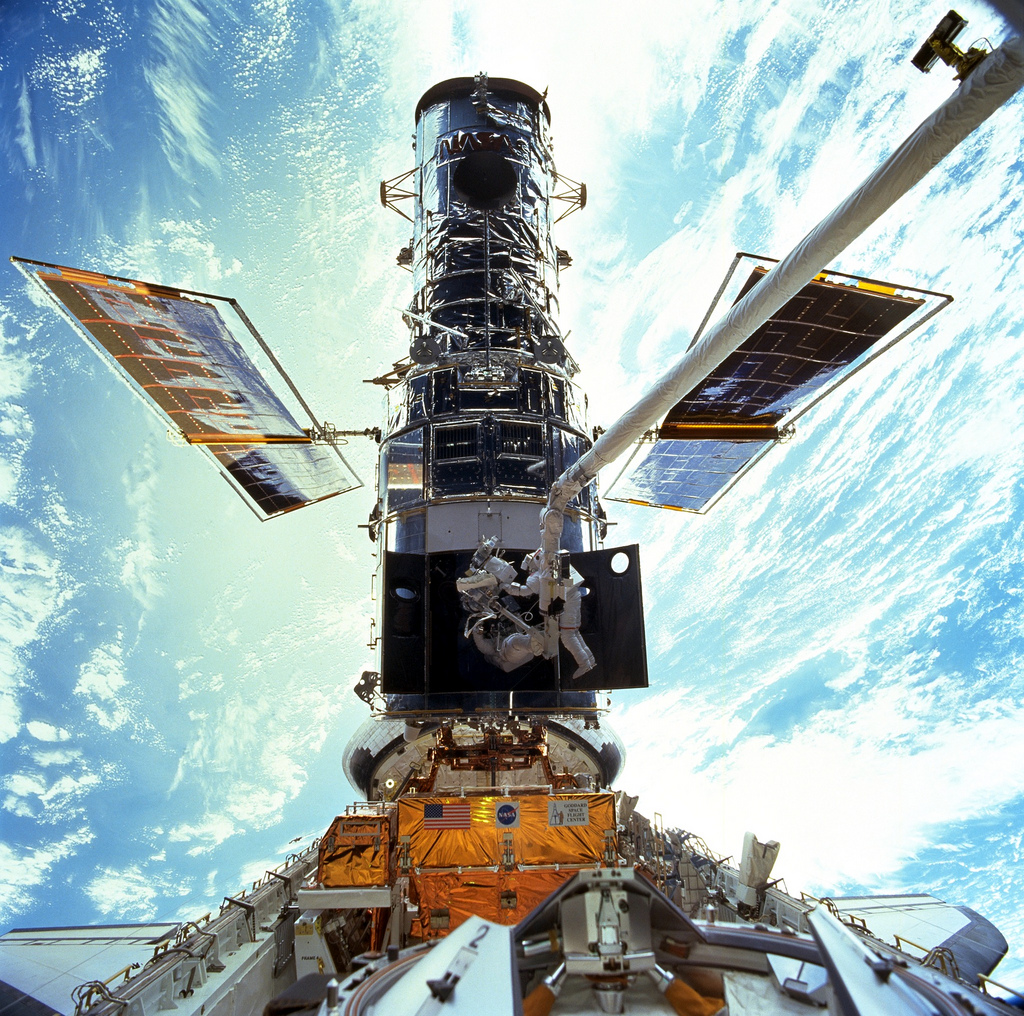*ARE WE ALONE ALIEN NERD SIREN*
Are we alone? Yup that’s right, this post is going to be two things:
- Hugely nerdy in a spacey-wacey, timey-wimey kinda way
- Very long. Like really long. If you are really into reading University Physics essays then grab a cuppa and a bit of cake and pull up a comfy seat. If you’re not, then maybe come back tomorrow when I might be putting up some pictures of my lunch or something.
At Uni I studied media production, but there has always been a hardcore nerd inside of me and the option of taking electives at Sussex University allowed me stretch my nerdy brain muscles each term in a very different way than photography, animation and digital media allowed for. Turns out I was actually alright at it too as Psychology and Physics were my highest graded 1st class marks whilst at Uni (clearly on the wrong career path, eh!) I really loved my Physics “From Quarks to the Cosmos” elective. All things space. What’s not to love about that for the uber geek? This was my final essay which they gave me the title “Are we alone” for. I hope there’s at least one person somewhere that may enjoy it 🙂
It was written in 2009 so is obviously now a little out of date but it does start with a Douglas Adams quote… so it has that going for it at least 😉
Are We Alone?
“Space […] is big. Really big. You just won’t believe how vastly hugely midbogglingly big it is. I mean you may thing it’s a long way down the road to the chemist, but that’s just peanuts to space” (Adams, 2002, Pg.70) and because of this, the questions have always been asked; are we alone? Are there other forms of life? Do they look like E.T? Do they have their own version of Big Brother? In this essay I will look at some of the ideas surrounding the discussions and projects relating to the search for extra-terrestrial life, methods used to find them and the consequences that their discovery might have on our existence.
In order to start thinking about what other life forms may look and behave like we first have to find them and “in July 2003, scientists at a meeting of the International Astronomical Union in Australia announced their latest estimate of the number of stars in the Universe – 70 sextillion. That is 7 followed by a mind-boggling 22 zeros” (Hanlon, 2005, Pg.12). Put into content that would mean “the number of stars in the visible Universe is larger […] than the total number of all the grains of sand on all the beaches on the Earth” (Hanlon, 2005, Pg.12) and that’s a lot of places for life to be hiding. But before we get ahead of ourselves talking about what we’re going to do when they come to visit we must first look at the ways in which we are searching for them, and this ties in with the ways we have been observing and finding planetary systems for many years and the ways in which planets have been and are being found currently.
Observatories
Earth-based observatories have developed massively since their creation in the seventeenth and eighteenth century. Gone are the days where astronomers used to sit with their eyes glued to the telescope squinting for signs of comets and new worlds; instead they tend to be stationed behind computers which are automated to do the observing for them. The “largest ground-based observatories have telescopes with mirrors up to 33 feet (10m) across” (Garlick, 2005, Pg.28) meaning they can capture huge amounts of the sky in fantastic detail in CCD’s (charged-coupled devices) which transfer the images onto data-chips and then into digital data which can be stored and viewed easily by the astronomers. The largest single optical telescopes are currently the Keck telescopes which are two matching telescopes 10m across. They are composed of mirrored segments known as ‘adaptive optics’ which can be adjusted freely of one another to offset the blurring effect often experienced by the Earths atmosphere.
Space Observatories & The Hubble Telescope
Space observatories survey “all regions of the electromagnetic spectrum” (Garlick, 2005, Pg.32) which are impossible for us to survey from Earth due to our atmosphere protecting us from harmful ultraviolet radiation, X-Rays and Gamma Rays. Putting these observatories in space removes the blurring effect experienced from ground-based observatories and thus gives us clearer and more detailed pictures of our skies and the surrounding universe.
The Hubble Space Telescope (HST) was launched in April 1990, names after the American astronomer Edwin Hubble who is believed to have discovered the expansion of the Universe (though this is hotly debated as many believe Vesto Slipher had a major role in its discovery). The telescope has recorded incredible images over the past nineteen years with its 8 foot main mirror (only a quarter of the size of the Keck telescopes) however it is its “position some 380miles (600km) above the blurry atmosphere that gives its remarkable power and insight” (Garlick, 2005, Pg.32) and that has made it the most well known space observatory. That being said, The James Webb Telescope is set to replace the HST in around 2011 when it comes out of service. Made with new technology designed to be more powerful it is expected to take the crown from the Hubble by unveiling a new 20ft thinner and lighter mirror made of hexagonal segments which will be folder inside the satellite until deployed, when it will then unfurl. This satellite should 10 to 100 times more sensitive that the Hubble and will study the formation of planets, galaxies and stars which could help pinpoint areas that have the possibility of other life.

Infrared Astronomy
Infrared literally means ‘below red’ and this is because the wavelengths are slightly longer that those if visible light. InfraredAstronomy was developed in the early 1800s through the work of Sir William Herschel; while studying sunlight he discovered the existence of infrared radiation. “Modern infrared techniques, such as the use of cryogenic detector systems […] and special interference filters for ground-based telescopes, were introduced during the early 1960s” in order to study astronomical “objects through observations of the infrared radiation that they emit” (Encyclopedia Britannica). Infrared astronomy makes it possible to look at objects that we might not otherwise be able to see from Earth of through standard telescopes because the light they emit is blocked by other dust particles while water vapour and carbon dioxide absorb the rest of the spectrum.
The Stratospheric Observatory for Infrared Astronomy (SOFIA) is a 2.5m telescope inside a 747 aircraft “designed to make sensitive infrared measurements of a wide range of astronomical objects” (Becklin, 2007, Journal). from in the air as opposed to on the ground or in space. Airborne astronomy has several advantages to that of space observatories due to the fact that instruments can be regularly maintained and updated and “heat dissipation and power consumption are of less concern than for satellites” (Becklin, 2007, Journal).
UV Astronomy and the IUE
Ultraviolet Astronomy “is a form of electromagnetic radiation having wavelengths just beyond the violet end of the optical spectrum, where the human eye cannot probe” (Garlick, 2005, Pg.40). All sorts of objects in the universe emit this dangerous radiation such as suns and novae, however the ozone in our atmosphere largely protects us from this. The only detection method for UV Astronomy is through the use of satellites and began in the late 1960s.
In 1978 the International Ultraviolet Explorer (IUE) was launched a joint UK, NASA and ESA mission sent into space to investigate UV astronomy. The most important part of this satellite was that it had a pair of spectrometers which split light into a rainbow of wavelengths. In this case it creates a spectrum of ultraviolet light which send back important information about temperature, compositions and the speed at which the object is moving. All of these things can be important when looking for planets that may contain life that could be similar to our own as it means finding planets with similar temperatures and atmospheres. IUE orbited at around 22,300miles above the Earths surface and outlived its expectancy, finally being switched off in 1998 after eighteen years.
X-Ray & Gamma Ray Astronomy and the Chandra X-Ray Observatory
Towards the blue end of UV is the X-Ray area of the electromagnetic spectrum and merging and extending from this is Gamma rays; “these X-Rays and gamma rays are like waves of light, but with a much shorter wavelength” (Hawking, 1988, Pg119) and “[…] are produced in radioactive decay or by collision of elementary particles” (Hawking, 1988, Pg.203). They are emitted by violent processes such as the growth of disks surrounding black holes in some binary stars and as with UV and infrared astronomy, only satellites can prove into this area successfully.
The Chandra X-Ray observatory launched by NASA in 1999 obits the Earth 200 times higher than the HST. Its mirrors are “the largest, smoothest and most precisely shaped mirrors ever ground” and are formed of “a series of tapered coaxial tubes” (Garlick, 2005, Pg.43). This means that the X-Rays enter the end of the tube, bounce of its sides and focus at the end, removing the possibility of them passing through the object, which is X-Rays have a tendency to do. The clarity of Chandra’s images has meant that astronomers are managing to improve their understanding of all sorts of high-energy objects, for example active-galaxies and supernovae.

The Search for ETI
The methods for planetary exploration I have outlined are fundamental in the search for other galaxies and astronomical objects but the question still remains; are we alone? And how are scientists and astronomers actively looking for other forms of life? I have saved the last methods of exploration until now as they are what I believe to be currently the most active in seeking out the possibility for other forms and life and their whereabouts.
Radio Astronomy & SETI
The largest part of the electromagnetic spectrum is radio waves, having very long wavelengths and situation beyond the far infrared. Karly Jansky was the first to discover that the sky was emitting these radio waves in 1931/32 and that these waves were coming from the Milky Way Galaxy. The popularity of this research area has grown massively, due partly because our atmosphere is transparent to radio waves and therefore the entire spectrum of waves is visible from ground-based observatories making its study more accessible. The dishes themselves are usually of parabolic (bowl-like) curvature which enables the radio waves to bounce off the curves and onto the receiver which protrudes from the centre on a framework from the dishes surface.
“American astronomer Frank Drake is a pioneering SETI researcher. In 1960 he became the first person in history to use a radio telescope to listen to ET’s” (Verma, 2007, Pg.126). The Search for Extraterrestrial Intelligence (SETI) was founded in 1984 i the USA by Drake and is the leading centre for the investigation into life from other planets. “In those early days of SETI, many scientists ridiculed the idea of extraterrestrial intelligent life, but to Drake the idea of intelligent civilisations beyond Earth was a distinct possibility” (Verner, 2007, Pg.126). In 1995 they began ‘Project Phoenix’, which uses the largest radio telescopes in the world, hoping to receive signals from alien civilisations by scanning 28million radio bands from a selection of nearby stars. In the past nineteen years there have been no positive detections however they have investigated several cases of interesting signals over this time period in order to eliminate them.
One of Drake’s most important pieces of research has been the Drake Equation. He announced it at the first ever SETI conference in 1961; it was an “an equation consisting of astronomical, environmental, biological and cultural parameters to estimate the number (N) of advanced civilisations that exist now in our galaxy and are capable of communicating across interstellar distances” (Verma, 2007, Pg.127).
R* = stars born each year in our galaxy
fp = number of above stars whose plants could be habitable
ne = average number of planets suitable for life around each of the stars
fl = worlds where life actually appears (fraction of)
fi = worlds where life evolves to an intelligent level (fraction of)
fc = worlds where intelligent life can communicate with other worlds (fraction of)
L = average expected lifetime of such technological civilisations
This equation is much debated for the guess work that may be needed in adding values. “Jill Tarter, a prominent SETI researcher […] says that it’s ‘really nothing more than a systematic way of quantifying our ignorance'” (Verma, 2007, Pg.128). In brief, R* is the only part of the equation that can be supported by observational evidence. We know there are approximately 250billion stars in our universe which is approximately 13.5billions years old; “therefore the average rate of star-birth is about twenty stars per year” so we can “that the value of R* is about 10” (Verma, 2007, Pg.128) when taking into account that some stars have already died.
The other values of the equation have been estimated to work out the final sum of the equation, however I do not have time to to discuss all of the values here. What I will say however is that different scientists have found very different figures. The Green Bank group’s pessimistic estimate is that there are 10,000 other works that could communicate intelligently with us (10 x 0.5 x 1 x 1 x 1 x 0.2 x 10,000 = 10,000) and their optimistic estimate is 500,000,000 (10 x 0.5 x 5 x 1 x 1 x 0.2 x 100,000,00 = 500,000,000) which is a pretty significant difference. Other researches have estimates ranging as low as 1 up to 30,000 and so this equation only seems to show us what we already know; we are either alone in the universe or there are other worlds with intelligent life.
“The Drake equation is simple a mathematical way of saying ‘we don’t know'”
Verma, 2007, Pg.130
Briefly, I would also like to mention that while radio astronomy may not have found a definitive answer as to whether there are other forms of life trying to communicate with us there are other projects discovering the possibility for life, or at least the beginnings of it, on other planets and moons. ‘Jupiters moon Europa is covered with a 25km-thick water ice crust thought to shield a gigantic ocean of brine”, it was discovered by the Galileo in the late 90s and “is one of the best candidates for extraterrestrial life that we know” (Hanlon, 2005, Pg.26). Saturn’s moon Titan is a similar story covered in water ice and hydrocarbon rivers and lakes, as was Earths four billion years ago. Although unlikely that these frozen lakes are teeming with strange aliens and monsters, it cannot be ruled out as a possibility.
Beam Me Up
So what happens if the aliens ever make it to Earth? Will anything change? I am briefly going to look at the one area which I think has to potential to change dramatically if we ever have official contact with extraterrestrial life; religion.
“Astronomy’s roots have long been entangled with those of religion, and are still not completely free” (North, 1998, Pg.784) and the upheaval, especially to creationism, “the theory that God created the world” (Wagner, 2004, Pg.308) caused by the arrival of other forms of life would mean catastrophe for Earth. If we take Christianity as an example “We are meant to be steward’s of God’s creation, and are responsible for the manner in which we exercise that stewardship. This insight is of major importance in relation to ecological and environmental concerns, in that it provides a theoretical foundation for the exercise of human responsibility towards the planet” (McGrath, 2006, Pg.130). Therefore if the discovery of other life and other planets which are not mentioned in the bible become known and thereby the idea of God creating all that exists is disproved, will this ‘stewardship’ and responsibility we currently buy into to take care of the planet environmentally be thrown to one side in favour of alternatives such as the pushing forward of advancement of environmentally unfriendly technological advances? We have always seen a tension between science and religion back to the rise of the Copernican model of the Solar System posing “a serious challenge to an centred view of the universe, which had become implicit in much traditional religious thinking” (McGrath, 2006, Pg.319) so who can say what would happen if a scientific discovery of other forms of ETI ever came to light? I can only imagine that it would cause great problems between both the scientific and religious communities.
Calling All Aliens
Lastly I would like to note that if there is intelligent life out there somewhere it may even be us that finds them first. As well as searching the skies we have been actively sending ‘messages’ into space for years. “The Voyager space probes carried several artefacts included a gold-plated phonographic disk, pictures of humans, allusions to physical constants and maps of the Solar System and nearby stars” (Hanlon, 2005, Pg.30) in 1977 and social networking site BEBO sent its users pictures and messages into space using a radio-telescope in Ukraine in 2009 which is hoped to reach its destination of Gliese 591C in 2029.
So in conclusions I’m far from giving up hope that somewhere in one of the 70 sextillion stars is a neighbouring planet with some new and exciting life form that will either want to be our friend or eat us for dinner; like the SETI researchers keep reminding us:
The absences of evidence if not evidence of absence
(Verma, 2007, Pg.216)
…………….
And if you made it through that you’re a bloody hero. Go have a pint of gin and a lie down.
Also please remind me to keep digital copies of EVERYTHING in future as re-typing that out was painful.
……………
Bibliography:
Douglas Adams, 2002. The Hitchhikers Guide to the Galaxy: The Trilogy of Four. Picador, London, UK.
Michael Hanlon, 2005. The Science of the Hitchhikers Guide to the Galaxy. Macmillan, Hampshire, UK & New York USA.
Mark A. Garlick, 2005. Astronomy: A Visual Guide. The Reader’s Digest Association Limited, Sydney, Australia.
Encyclopedia Britannica definitions of Infrared Astronomy available at: http://www.britannica.com/EBchecked/topic/287941/infrared-astronomy [accessed 26/05/2009 [undated]
E.E. Becklin, 2007. Spectroscopic observations with the Stratoshperic for Infrared Astronomy (SOFIA) Journal in Advances in Space Research 2007: (Volume 40, Issue 5) p.644. Available at www.sciencedirect.com [accessed 26/05/2009]
Stephen Hawking, 1988. A Brief History of Time. From the Big Bang to Black Holes. Printed by Cox & Wyman Ltd, Reading, UK.
Surendra Verma, 2007. Why Aren’t They Here? The Question of Life on Other Worlds. Icon Books Ltd, Cambridge, UK.
John North, 2008. COSMOS: An Illustrated History of Astronomy and Cosmology. The University of Chicago Press, Ltd. Chicago, USA.
Richard WAgner, 2004. Christianity for Dummies. Wiley Publishing Inc. Indiana, USA.
Alister E. McGrath, 2006. Christianity: An Introduction. Second Edition. Blackwell Publishing, Oxford, UK.





2 Comments
Mammasaurus
April 17, 2014 - 11:25 pmWoah!
DannyUK (@DannyUK)
February 10, 2016 - 12:23 pmGeeky high five to you for that! I refuse to believe that we can possibly be alone in space. Assuming that there are that many stars (even if you don’t choose to differentiate between a star and a planet, that is still a huge amount of stars) then there MUST be life somewhere else. There are 7 billion people on earth and I know for a fact that loads of the look like me. By that theory, there is definitely another Earth out there!